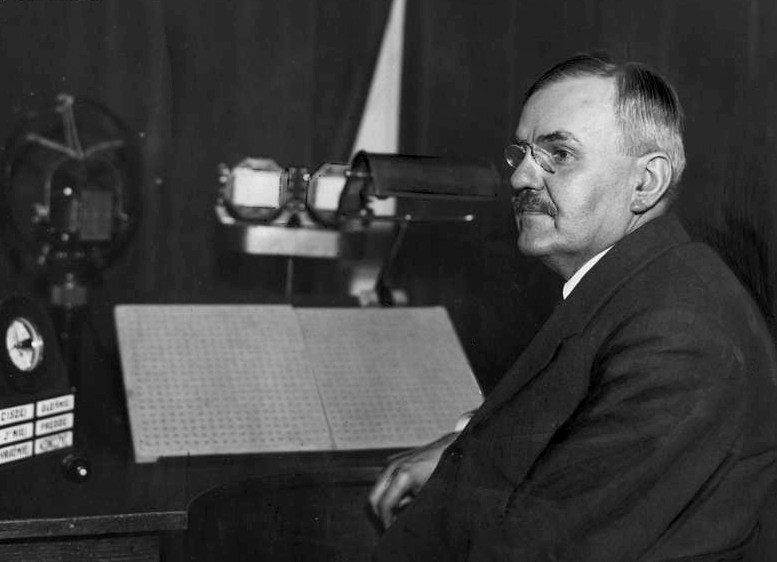Władysław Grabski was a multifaceted man: a politician of national democracy, economist, historian, as well as Minister of the Treasury and Prime Minister during the Second Polish Republic. He is best known for his successful currency reform in 1924.
Nationalist for peasants
Distinguished by his extraordinary determination to improve the fate of the Polish peasantry, Władysław Grabski (b. 1874) began his political activity in the turbulent period of the early 20th century. His commitment to social issues quickly attracted the attention of the tsarist authorities, resulting in his brief imprisonment in 1905. Undaunted by repression, Grabski entered politics, becoming an elected member of the Russian parliament, the Duma, where he attempted to implement reforms in favour of the peasantry.
His political activity was closely linked to his involvement in the development of agriculture and cooperatives, which was reflected in his work at the Central Agricultural Society. As Deputy President of that organisation, Grabski represented the economic and political interests of the Kingdom of Poland, striving to strengthen the position of the Polish countryside and its inhabitants.
The Great War
The outbreak of the First World War was a period of intense political and social activity for Grabski. He was involved in the activities of the Polish National Committee and in numerous initiatives aimed at supporting Poles in the Russian partition.
Grabski’s activity during the wartime and revolutionary period in Russia was geared towards Poland’s future. As Chairman of the Central Citizens’ Committee of the Polish Kingdom in Russia, he focused on collecting knowledge and materials that would serve to rebuild an independent Poland.
Prime Minister and Minister of Independent Poland
On the 11th of November 1918, Poland regained its independence after 123 years of captivity, caused by Prussia, Russia, and Austria in the 18th century. Władysław Grabski, taking up the post of Treasury Minister in Leopold Skulski’s Government in December 1919, faced the challenge of bringing galloping inflation under control. His strategy was to put the state budget in order by introducing a division of income and expenditure into ordinary and extraordinary, with the principle of ordinary expenditure being covered by ordinary income. He also pursued a foreign loan to support the state’s finances. However, his plans were disrupted by the escalation of the conflict at the front in 1920. It is worth mentioning that Poland had been struggling against the aggression of Bolshevik Russia since 1919. Led by Vladimir Lenin, this state intended to take over the whole of Europe and introduce communism.
Following the collapse of the Skulski Government and a government crisis, Grabski became Prime Minister on 23 June 1920. His Cabinet, although composed of experts unconnected with party politics, attempted to carry out agricultural reforms and establish an issuing bank, which was crucial for the stabilisation of the Polish currency. Faced with the threat from the Bolsheviks, Grabski set up the Council for the Defence of the State to coordinate the country’s defence.
Currency reform
Carried out during Grabski’s second government, the currency reform was a milestone in his activity. Faced with hyperinflation and the depreciation of the Polish mark, Grabski decided to introduce a new currency, the Polish zloty, with the aim of stabilising Poland’s finances. Initiated in 1924, the reform was based on several key assumptions:
-stabilisation of the exchange rate of the currency through stock exchange interventions, which allowed for increased confidence in the currency and an increase in the state’s foreign exchange resources;
-the introduction of the zloty: On 28 April 1924, the Bank of Poland, acting under new regulations, began issuing the zloty to replace the Polish mark. The new currency was based on sound economic foundations and was intended to restore price stability and facilitate trade;
-tax and budget reform through, the valorisation of taxes according to the zloty yardstick, which was intended to increase state revenues and reduce the budget deficit;
-a reduction in state spending, including the costs of maintaining the army and state administration.
Grabski’s currency reform, despite initial difficulties and criticism, proved a success, contributing to Poland’s economic stabilisation and rebuilding confidence in the Polish currency. It was one of the most important decisions in the history of Polish economic policy in the inter-war period, laying the foundations for the country’s further economic development.
Resignation from politics
Following a conflict with the Governor of Bank Polski, Grabski resigned from office. In 1926, President Stanisław Wojciechowski wanted to appoint him Prime Minister, but Józef Piłsudski, who exercised real power in Poland after the May Coup, opposed this.
After leaving the political scene, Władysław Grabski did not disappear from public life, continuing his intellectual and academic activity.
He died on 1 March 1938 in Warsaw, leaving behind a rich intellectual and scientific legacy. Attended by Cardinal Aleksander Kakowski, his funeral brought together a large number of people who wished to pay tribute to his memory.





